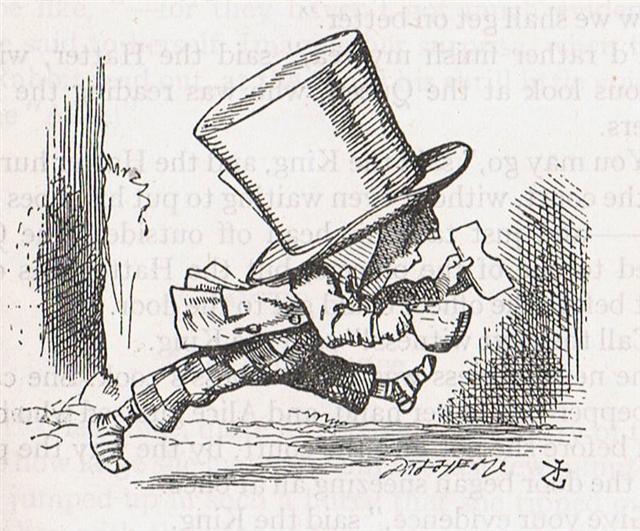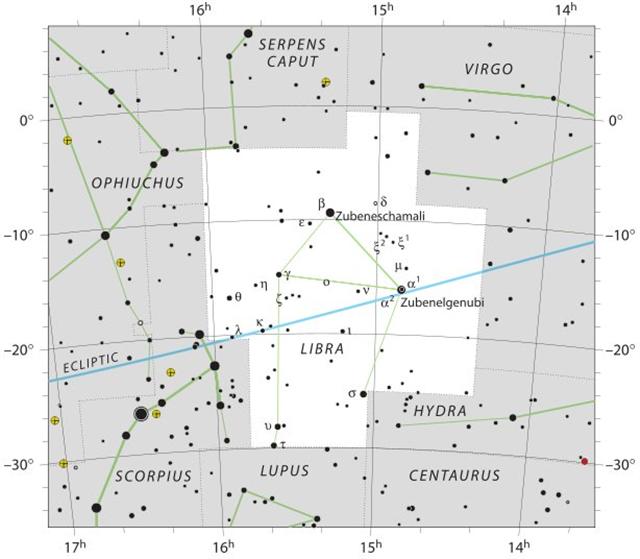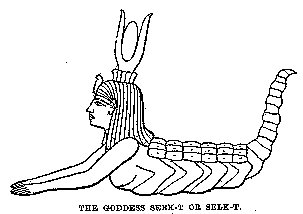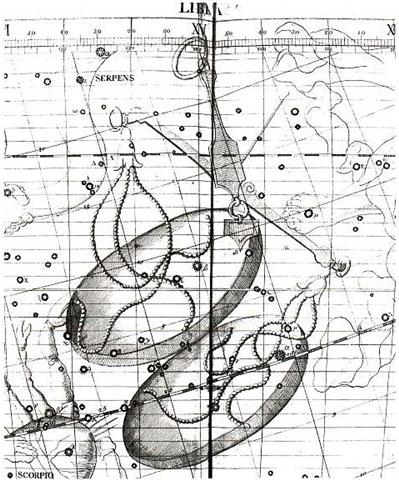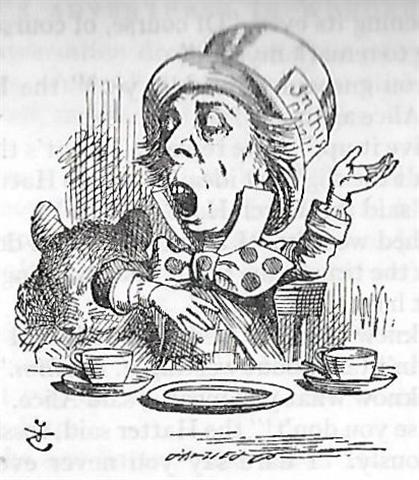26. But already 5 days after their conjunction in October 29 (*222) AD 2023 Mercury had rushed away,
leaving Mars behind at the beginning of Libra, at Zuben Elgenubi:
Toliman is α Centauri, the star closest to our own Sun (similar to how Mercury is the planet closest to our Sun). ... Alpha's splendor naturally made it an object of worship on the Nile, and its first visible emergence from the sun's rays, in the morning at the autumnal equinox, has been connected by Lockyer with the orientation of at least nine temples in northern Egypt from 3700 B.C. onward. As such [an] object of worship it seems to have been known as Serk-t ...
Rijl al Awwa is μ Virginis:
... The medieval names Auva, Al Awwa, and Minelauva are from the Arabic, meaning 'barking (dog)'. This star, along with β Vir (Zavijava), γ Vir (Porrima), η Vir (Zaniah) and ε Vir (Vindemiatrix), were Al Awwā, the Barker ... On Euphrates it was Lu Lim, the Gazelle, Goat, or Stag, - or perhaps King; and, with ε, probably Mas-tab-ba, another of the seven pairs of Twin-stars of that country. The Hindus called it Āpa, or Āpas, the Waters; and the Chinese, Tsze Seang, the Second Minister of State ... ... The Latins called this Porrima, or Antevorta, sometimes Postvorta, names of two ancient goddesses of prophecy, sisters and assistants of Carmenta or Carmentis, worshiped and at times invoked by their women. Porrima was known as Prorsa and Prosa by Aulus Gellius of our 2d century. γ was specially mentioned by Kazwini as itself being Zāwiat al 'Awwā', the Angle, or Corner, of the Barker; and Al Tizini, with Ulug Beg, had much the same name for it; but Al Bīrūnī, qouting from Al Zajjāj, said 'these people are all wrong', and that 'Awwā' here meant 'Turn', referring to the turn, or bend, in the line of stars ... ... There is, however, a remarkable variant where it is said that he [Kullervo in Kalevala] was 'sent to Esthonia to bark under the fence; he barked one year, another one, a little from the third; three years he barked at the smith of his uncle, at the wife (or servant) of the smith as his daughter-in-law' ... But there seems to be no ambiguity in the world rijl, for it means foot. ... Gamma Andromedae ... is the third brightest star in the constellation of Andromeda. It is also known by the traditional name Almach (also spelt as Almaach, Almaack, Almak, Almaak, or Alamak), from the Arabic العناق الأرض al-‘anāq al-’arđ ... 'the caracal' (desert lynx).
Another term for this star used by medieval astronomers writing in Arabic was آلرخل المسلسلة Al Rijl al Musalsalah 'the Woman's Foot' ... ... Bailey's edition of Ulug Beg's catalogue gives it [α] as Rigil Kentaurus, from Al Rijl al Kentaurus, the Centaur's Foot; describing it as on the toe of the right front hoof, and Bayer so illustrated it. Chrysococca had the synonymous πουσ κοντουροσ; and our Century Dictionary retains Rigel, although this is better known for the bright star in Orion. Burritt located on the left fore hoof a 4th magnitude star that he wrongly lettered α; and above the pastern our 1st magnitude, also lettered α, with the title Bungula, which I find only with him and the Standard Dictionary. He gives no explanation of this, nor can I trace it further; it may be a word specially coined by Burritt from β and ungula, the hoof, although even in this the letter is wrong ... ... Algebar and Elgebar are seen in poetry for this star [β Orionis] but it univerally is known as Rigel, from Rijl Jauzah al Yusrā, the left foot of the Jauzah ... From this point of observations the ideas would move on to the right big toe of the Virgo woman (Musalsalah), for with it (which came before her heels) she sowed disorder:
In contrast to when her pair of heels would stabilize Libra:
... Janus was perhaps not originally double-headed: he may have borrowed this peculiarity from the Goddess herself who at the Carmentalia, the Carmenta Festival in early January, was addressed by her celebrants as 'Postvorta' and 'Antevorta' - 'she who looks both back and forward' ... Antevorta and Postvorta had two altars in Rome and were invoked by pregnant women as protectors against the dangers of childbirth. Antevorta was said to be present at the birth when the baby was born head-first; Postverta, when the feet of the baby came first ...
'Twinkle, twinkle, little bat!' // How I wonder what you're at!' |
||||||||||||||||||||||||||||||||||||||||||||||||||||||||||||||||||||||||||||||||||||||||||||||||||||||||||||||||||||||||||||||||||||||
